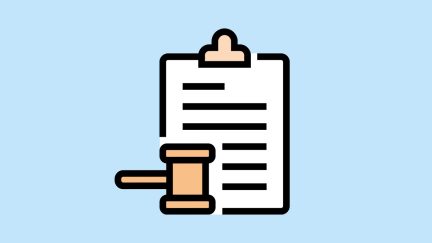For more stories like this, sign up for the PLANSPONSOR NEWSDash daily newsletter.
Lumber Company Sued for Mismanagement of Plan Assets
In the suit, Perez v. Danby (docket number: 2:14-cv-02920-JHS), filed in the U.S. District Court for the Eastern District of Pennsylvania, Danby Lumber and Millwork Co. Inc. is named as the sponsor and administrator of the Danby Lumber and Millwork Co. Inc. 401(k) profit sharing plan. Stephen Scott Danby, Jr. was the president and majority shareholder owner of the company, and also served as the trustee of the plan. In addition to serving as trustee, Danby also performed the duties of plan administration for the company.
The DOL alleges Danby and the company participated in and undertook action to conceal acts or omissions by each other that they knew to be violations of the Employee Retirement Income Security Act (ERISA). The suit also alleges that Danby and the company breached their fiduciary duties to the plan and its participants, failed to take reasonable efforts to remedy those breaches, and caused the plan to engage in transactions that violated ERISA.
An investigation by the DOL’s Employee Benefits Security Administration (EBSA) finds that although the company was named as the plan administrator, Danby made the decisions regarding plan administration and the disposition of the plan’s assets. As part of his plan administrative duties, he was responsible for making decisions concerning the remittance of employee elective contributions to the plan and was also responsible for making investment decisions for the plan. Based on his authority to exercise discretionary control over the administration and operation of the plan, Danby was considered a fiduciary to the plan.Although the plan failed to file required reports with the Secretary of Labor and failed to provide required information to plan participants, as of December 31, 2007, it was known that approximately 30 participants were fully vested in the plan with account balances totaling approximately $840,000. In 2011, the company terminated all of its employees. As a result, all participants became eligible for their plan distributions. However, the majority of the plan’s participants were denied their benefit distributions because the plan had insufficient liquid assets to satisfy their requests.
The EBSA investigation found Danby and the company were involved in a number of bad real estate investments. The first of these began on or about December 30, 2008, when Danby and the company invested approximately $175,000 of the plan’s assets in an undeveloped lot at 33 Orchard View Drive in Chadds Ford, Pennsylvania. The plan purchased this lot from the company. In this transaction, Danby, as president of the company, acted as the seller. In the same transaction, Danby, as trustee of the plan, acted as the buyer. In addition to the purchase price, the plan paid $4,900 in settlement costs. On March 8, 2011, the Orchard View lot was independently appraised at $145,000. The DOL finds that since December 30, 2008, Danby and the company have used assets of the plan to satisfy property taxes and other taxes for the Orchard View lot.
The second of the real estate deals began on February 6, 2009, when Danby and the company executed a promissory note for a loan of $100,000 to George Harlan, a construction contractor and customer of the company. The note was to be secured by a mortgage on an apartment building owned by Harlan. However, a mortgage was never obtained to secure the promissory note for the plan. Further, while Danby and the company received $16,628.28 in payments from Harlan, Danby deposited this amount into the company’s account rather than the plan. No payments were received by Harlan with regard to the promissory note after June 24, 2010, and neither Danby nor the company took any actions to collect the remainder of this note from Harlan.
The third of these bad real estate investments began on or about December 10, 2010, when Danby sold the plan’s undeveloped lot at 34 Gibble Road, in Cochranville, Pennsylvania. The transaction was contingent upon Danby retaining property rights on the lot for Danby and his family for the seller’s lifetime and that Danby had the right of first refusal to purchase the property from the seller upon any future offer to sell the property. The plan had purchased the Gibble property on August 22, 1996, for $180,000. In February 2008, the property was independently appraised at $420,000. Danby and the company sold the Gibble property in December 2010 for $270,000 and the retention of the Danby family’s property rights.
The EBSA also found that between December 2010 and April 2011, Danby and the company used more than $111,000 of the plan’s assets to satisfy Danby’s personal expenses and the company’s expenses. These expenses included using the plan’s assets to pay Danby’s parents for a loan they made to the company, Danby’s personal legal expenses, the company’s legal expenses, utility bills, health insurance premiums, payroll, vendor bills and banking fees. All of these transactions were made after the plan received approximately $266,000 from the sale of the Gibble property in December 2010.
According to the lawsuit, on or about December 22, 2010, shortly after the plan sold the Gibble property, Danby and the company transferred approximately $35,000 from the plan for the purchase of a membership in the Fieldstone Golf Course from Danby. Danby had originally purchased the golf course share in his own name with his own assets. However, to date, the Fieldstone Golf Course remains titled to Danby instead of the plan.
According to the DOL, while at least one plan participant requested their plan benefit prior to September 14, 2010, and was unable to obtain such a distribution until September 2011, Danby made $10,000 distributions to his mother on December 10, 2010, and January 25, 2011. Danby made a $10,000 distribution to himself on May 18, 2011. The DOL alleges that by September 6, 2011, approximately $12,000 of the $266,000 deposit from the plan’s sale of the Gibble property remained in the plan’s account. By December 31, 2011, the plan had a cash balance of $7,120.90 and participants were still waiting for their vested benefit payments.
The DOL seeks to remove Danby and the company as fiduciaries to the plan and to permanently enjoin them from making any decisions or having custody or control over any employee benefit plans covered by ERISA.
The DOL is also seeking:
- Appointment of an independent fiduciary, paid for by Danby and the company, to marshal remaining assets of the plan pursue claims on behalf of the plan, and make distributions to plan participants;
- Disgorgement of all monies received from the plan caused by their fiduciary misconduct;
- The use of Danby’s individual plan account balance to offset losses, including lost opportunity costs resulting from his fiduciary breaches if the losses are not otherwise restored to the plan by the defendants; and
- The defendants’ cooperation with the DOL investigation.
The full text of the lawsuit can be found here.


